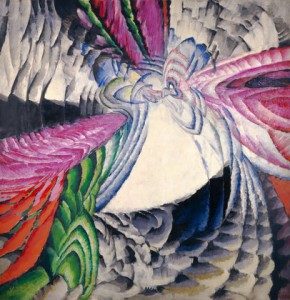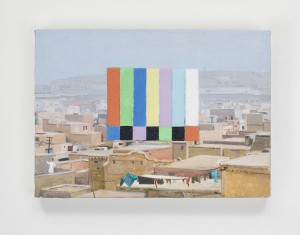
Francis Alys,
Untitled, 2011-2012
There is so much art to see in New York that I almost never go to an exhibition more than once. There is always something new to see: something that might be wonderful or joyful or powerful or memorable, or maybe all four. Sometimes as I’m walking into a gallery I get a little butterfly inside because the possibility exists that I’m about to have a life-changing experience. It’s a childlike feeling, akin to thinking that maybe today the Good Humor Man is giving out free ice cream. And balloons.
I like that feeling.
But today I revisited several galleries because having seen the shows, I couldn’t forget them. They haunted me.
There is a quality of inevitability to excellent art. I notice the decisions that the artist made, but I can’t imagine any improvement. Sometimes it looks effortless, sometimes agonized, but in either case, the end result has triumphed over the process of creation and now the work exists independent of how it was made and by whom.
I feel that way about the Francis Alys video Reel-Unreel (at David Zwirner 525 W 19th). http://www.davidzwirner.com/exhibition/francis-alys-ny-2013/. I discussed the film last week and still highly recommend it. This week his paintings had a stronger impact on me. They are clearly connected to the film, showing desert landscapes struggling to exist in the same space as film color test patterns. Such a simple idea, and yet so profound when we consider a country (Afghanistan) in which the authorities have tried to censor all outside media influence.
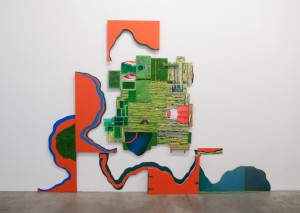
Diana Cooper,
Turf
I also returned to the Diana Cooper show My Eye Travels at Postmasters Gallery (459 W 19th) http://www.postmastersart.com. Ms. Cooper’s witty assemblages of photographs, and objects leap off the wall to trick the viewer into believing the impossible. They look dimensional where flat, drawn where manufactured, and continue to refer to the gallery space in which they are exhibited and the art world at large. These are serious works made with a sense of fun and astonishing skill. I stood far away, I stood as close as possible, I tried to peer behind, and I was desperate to touch them (but I didn’t). Several times I laughed out loud (art gallery numbered pins as design elements). Honestly, I might have to make a third trip before the show closes on February 9th.
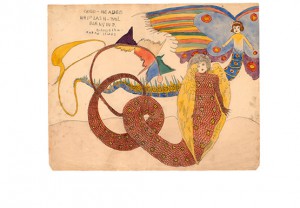
Henry Darger
One show that I haven’t had the chance to revisit, but which remains on my mind is the Henry Darger show at Ricco/Maresca Gallery (529 W 20th) http://www.riccomaresca.com/exhibitions/exhibitions_current.htm. I had the good fortune to speak with Gallery Director Elenore Weber today, who reminded me that the Darger works on display were originally book illustrations, and therefore drawn on both sides of the paper. The gallery is having a “turn-the-paintings-around” event this coming Friday evening, February 1st, so that we can all see the opposite sides. I can’t imagine the logistics involved, but I’m grateful for them.



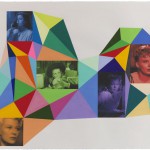

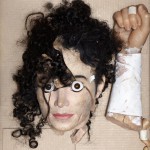
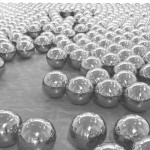
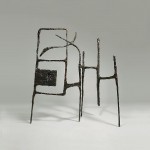
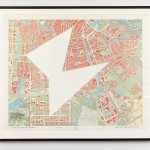
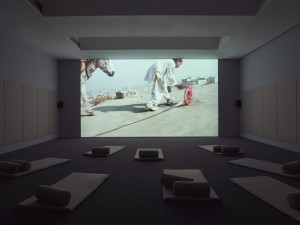
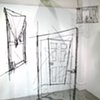
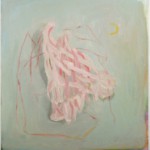
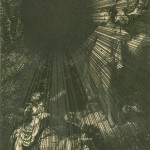
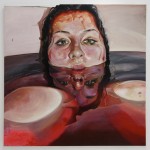
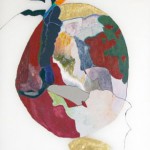
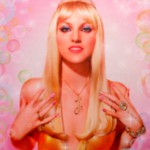
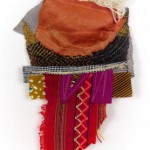
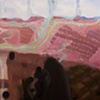
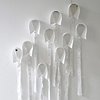
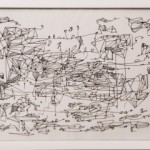
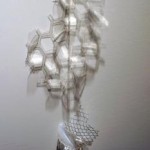
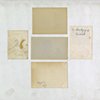
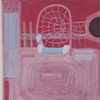
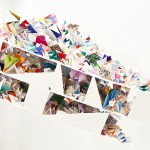
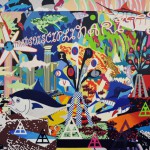
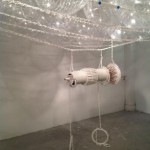
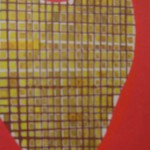

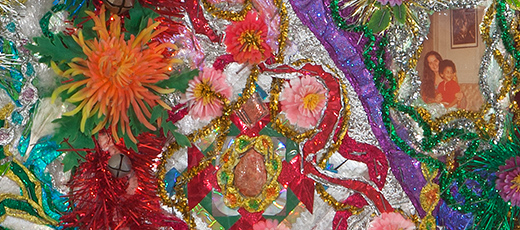
 It is rare that an art installation inspires exuberance in viewers, but also rare that an installation so involves viewers in participating and creating the art.
It is rare that an art installation inspires exuberance in viewers, but also rare that an installation so involves viewers in participating and creating the art.